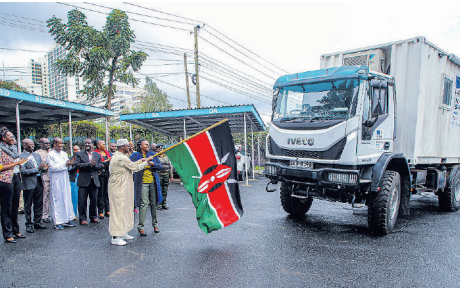

Health teams from the national and county governments are using mobile laboratories to screen kala-azar in Wajir after 26 people succumbed to the disease.
With each passing day, the disease burden has continued to grow, forcing the county referral hospital to improvise extra bed spaces to cater to increasing patients.
So far, 26 people have died and 111 others admitted to hospital since kala-azar’s outbreak in September last year. Eldas and Wajir West subcounties are the most affected.
The teams that have been dispatched to worst-hit areas, will screen residents to improve early detection and treatment.
Assistant director of medical services and epidemiologist Emphana Irura will head the epidemic preparedness and response team, the county said in a statement.
Wajir health executive Habiba Maalim said two critically ill children are on ventilators. She said most of those who have died arrived at the hospital in bad shape.
“Poor healthcare-seeking culture is mostly to blame for the deaths. However, our trained teams are on the ground to educate the people on the signs and symptoms of the disease, modes of transmission, incubation period and preventive measures,” she said.
Last week, the department of health started a 10-day fumigation and spraying drive to contain the spread of the disease.
Mohamed Maalim, the Wajir county director for public health said 6,000 households were targeted in the exercise.
Last week, Wajir Governor Ahmed Abdullahi made a clarion call to residents and health players to help fight the disease.
He assured them his administration is working closely with the national government and other stakeholders to avert further spread and deaths.
Abdullahi said the county department of medical services is facing a myriad of challenges such as inadequate medical supplies and overloaded facilities.
The disease, which has mostly affected children under five years and the elderly, causes fever, weight loss and loss of appetite.
The outbreak follows recent floods that have led to widespread vegetation growth and large cracks in the ground—ideal breeding grounds for sandflies responsible for transmitting the disease.
Kala-azar is common in arid and semi-arid regions of Northeastern and the Rift Valley, especially Loima subcounty in Turkana, Marigat in Baringo, Machakos, Mandera, Garissa, Wajir and West Pokot.
The neglected tropical disease is transmitted to humans by the bite of infected sandflies. The parasite is 1.5 to 3.5 millimetres long.










![[PHOTOS] Gachagua warm reception in Nyandarua](/_next/image?url=https%3A%2F%2Fcdn.radioafrica.digital%2Fimage%2F2025%2F04%2Fc2a8c64d-5577-4768-a0ac-513c8876c288.jpeg&w=3840&q=100)


